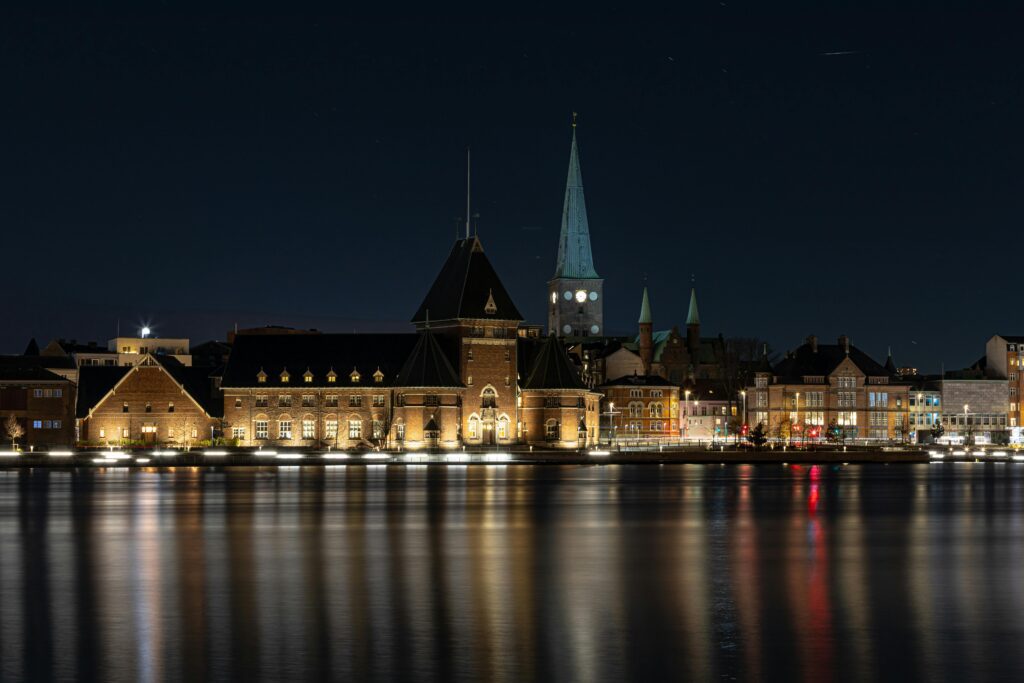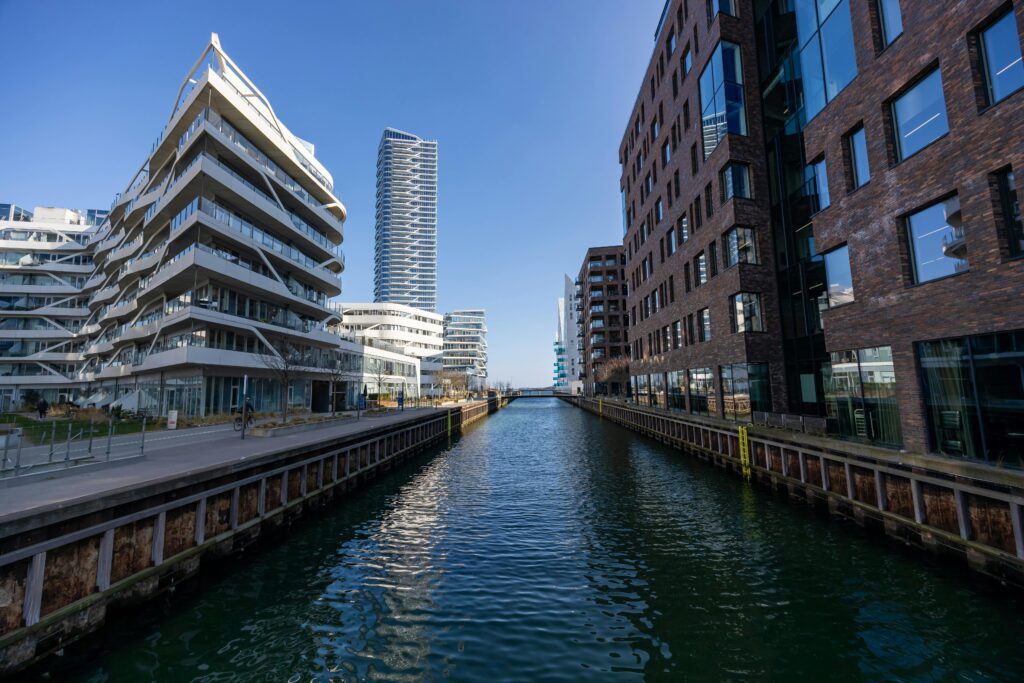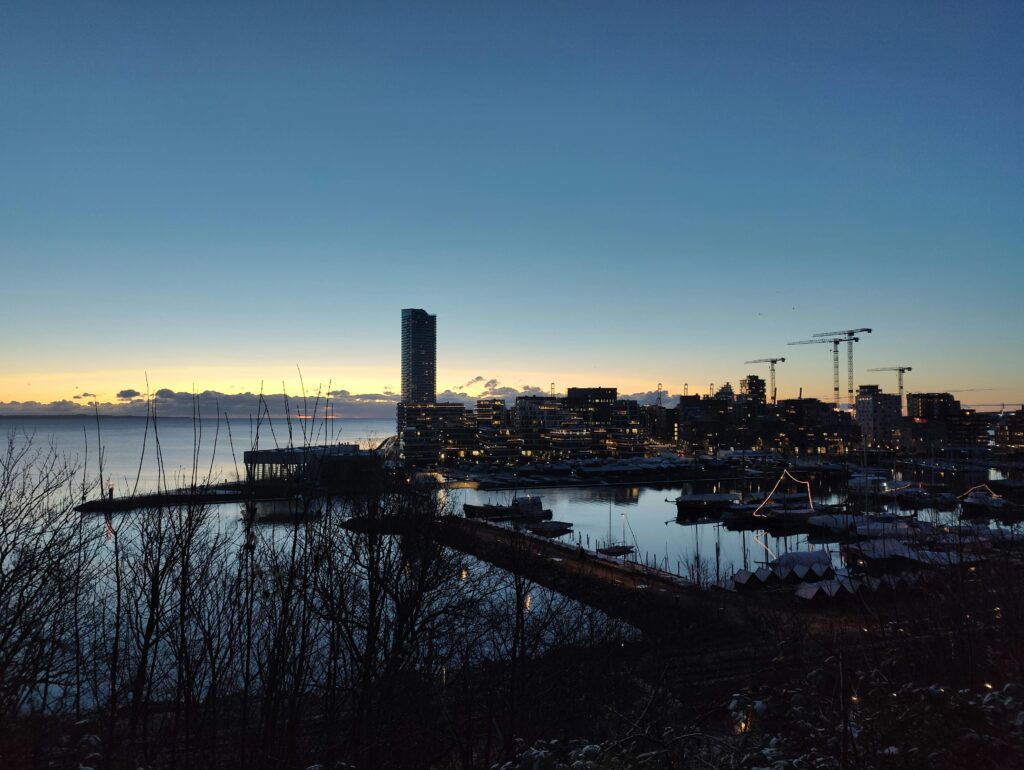Discover the best Aarhus (Denmark) travel guide with a 3-day itinerary, local food spots, hidden gems, and practical tips for an unforgettable trip.
Introduction: Why Visit Aarhus (Denmark)?
Aarhus, Denmark’s second-largest city, is a vibrant blend of history, culture, and modern Scandinavian charm. Known for its youthful energy (thanks to its university), stunning architecture, and coastal beauty, Aarhus offers a perfect mix of urban exploration and nature escapes.

As a traveler who spent a month exploring Aarhus, I was captivated by its cobblestone streets, the salty Baltic breeze, and the warm smiles of locals sipping coffee in cozy cafés. Whether you’re a history buff, foodie, or outdoor enthusiast, this guide will help you experience the best of Aarhus.
What Makes Aarhus Special?
– Cultural Hub: Home to world-class museums like ARoS and Moesgaard.
– Food Scene: From Michelin-starred dining to hearty street food.
– Outdoor Adventures: Coastal hikes, urban beaches, and lush forests.
– Local Vibe: A welcoming, laid-back atmosphere with a strong sense of hygge (coziness).
When to Visit Aarhus for the Best Experience
Best Seasons for Travel
- Summer (June-August): Warm weather (15-25°C), long daylight hours (sunset as late as 10 PM!), and lively festivals like Aarhus Festuge (August), a 10-day cultural explosion with open-air concerts, art installations, and street performances. The city buzzes with energy, and the waterfront comes alive with pop-up bars and kayak rentals.
- Spring (April-May) & Autumn (September-October): Fewer crowds, mild weather (10-18°C), and golden foliage in the Marselisborg Forests. Perfect for peaceful walks and museum visits without the summer rush.
- Winter (November-March): Chilly (0-5°C) but magical, with Christmas markets (especially at Tivoli Friheden) and hygge-filled cafés serving gløgg (mulled wine) and æbleskiver (Danish doughnuts).
Events & Festivals
- NorthSide Festival (June): Denmark’s top music festival, featuring international acts like The Killers and Arctic Monkeys.
- Aarhus Jazz Festival (July): A week-long celebration with free street performances and intimate club gigs.
- Christmas Markets (December): Tivoli Friheden transforms into a winter wonderland with ice skating, craft stalls, and twinkling lights.
Pro Tip: Book accommodations early in summer—Aarhus gets busy, especially during festivals. Winter visits are cheaper but pack warm layers!
Off the Beaten Path Locations in Aarhus
1. The Infinite Bridge (Den Uendelige Bro)
A stunning circular wooden bridge extending into the sea, perfect for sunrise photography. Located in Varna, a 15-minute drive from the city, this architectural marvel disappears underwater at high tide. Visit at dawn for a surreal, fog-drenched experience.
2. Moesgaard Museum’s Hidden Beach
After exploring Viking history at Moesgaard, hike down the forest trail to Ballehage Beach—a locals’ favorite picnic spot with soft sand and calm waters. In summer, join the Danes for a hygge bonfire at sunset.
3. Aarhus Ø (Aarhus Docklands)
A futuristic district with avant-garde architecture like the Iceberg Building, rooftop bars (try Gedulgt for cocktails with harbor views), and vibrant street art. Don’t miss the floating saunas (from 150 DKK/hour)—I still remember the shock of jumping into the Baltic after sweating it out!
4. Riis Skov Forest
A tranquil woodland north of the city, ideal for cycling or foraging mushrooms in autumn. The Bellevue Beach here is quieter than the popular Den Permanente.
Personal Anecdote: I stumbled upon a hidden beachside jazz jam session near Aarhus Ø—locals brought guitars and blankets, and we sang along as the sun dipped below the horizon.
Local Experiences You Can’t Miss
1. Visit the Latin Quarter (Latinerkvarteret)

Wander through narrow alleys lined with independent boutiques (like “Stilleben” for Danish design), vintage shops, and candlelit wine bars. Stop by Mikkeller Bar for craft beer or Under Masken for live jazz in a speakeasy setting.
2. Bike Along the Coastal Route
Rent a bike (50-100 DKK/day from Aarhus Cykeludlejning) and follow the 30 km coastal path to Moesgård Beach. Pack a picnic of rugbrød (rye bread) and local cheese from Aarhus Central Food Market.
3. Try Snaps at a Traditional Danish Dinner
Locals love akvavit (snaps)—a herb-infused spirit. Pair it with smørrebrød (open-faced sandwiches) at Restaurant Mellemrum, where the stjerneskud (“shooting star” sandwich with shrimp and caviar) is a must.
4. Friday Bars (Fredagsbar)
University students host weekly pub events—Turing Friday Bar (tech students) and Jordbaren (geology students) are lively spots to mingle with locals over cheap beer (20-30 DKK).
Tip: Book a local food tour to taste authentic Danish cuisine!
Unique Accommodations in Aarhus
| Type | Recommendation | Price Range (per night) | Why Stay Here? |
|---|---|---|---|
| Boutique Hotel | Hotel Atlantic | 1,200-1,800 DKK | Rooftop sauna with city views. |
| Eco-Friendly Stay | Guldsmeden Aarhus | 900-1,400 DKK | Organic breakfast and Ayurvedic spa. |
| Budget Hostel | Aarhus Hostel | 250-400 DKK | Central location, free bike rentals. |
| Quirky Airbnb | Houseboat in the Harbor | 700-1,000 DKK | Wake up to seagulls and waves. |
Insider Tip: For luxury, Villa Provence offers a romantic B&B with antique furnishings and a garden terrace.
Authentic Food Spots in Aarhus
1. Aarhus Street Food (Midtown Market)
Try Danish hot dogs (røde pølser) with remoulade, sushi burritos at “Fish Club,” and craft beer from “Fairbar.” Budget: 80-150 DKK per dish.
2. Restaurant Domestic (Fine Dining)
Michelin-starred Nordic cuisine—book weeks ahead! Their 7-course tasting menu (1,200 DKK) features foraged ingredients like sea buckthorn and wild mushrooms.
3. La Cabra Coffee (Best Café)
Their cardamom buns (35 DKK) are legendary. Pair with a filterkaffe (pour-over coffee) for the ultimate hygge break.
4. Mefisto (Seafood Heaven)
The smoked salmon smørrebrød (120 DKK) is creamy, tangy, and topped with crispy capers.

Personal Anecdote: At Domestic, I tried fermented gooseberries for the first time—a bizarre yet unforgettable burst of tangy sweetness.
Meeting Locals & Cultural Etiquette
- Learn a few Danish phrases: “Tak” (thank you) and “Skål!” (cheers) go a long way.
- Respect personal space: Danes value privacy but warm up over beer—avoid small talk with strangers on buses.
- Tipping: Not expected, but rounding up the bill is polite.
- Dress Code: Casual but neat—Danes love understated elegance (think black jeans and a crisp white shirt).
Pro Tip: Join a folk high school event or a community garden workshop to connect with locals.
Photography Opportunities in Aarhus
📸 Top Spots:
– ARoS Art Museum’s Rainbow Panorama: Sunset casts a kaleidoscope of colors over the city.
– Dokk1 Library’s futuristic interior: The spiral staircases are a minimalist’s dream.
– Sunset at Tangkrogen Harbor: Silhouettes of sailboats against a pink sky.
Hidden Gem: The graffiti-covered underpasses near Aarhus Ø for urban art shots.
Practical Tips for Exploring Aarhus
Transportation
- Buses & Light Rail: 24-hour pass (80 DKK). Use the Midttrafik app for schedules.
- Biking: Free city bikes at Donkey Republic stations (unlock via app).
- Walking: The city center is compact—most attractions are within 30 minutes.
- Train from Copenhagen: 2.5-3 hours (300 DKK one-way). Book via DSB.
Budgeting
- Meals: 100-300 DKK (budget) / 500+ DKK (fine dining).
- Attractions: 50-150 DKK (museums). Free entry on Wednesdays at ARoS!
- Daily Budget: 600-1,000 DKK (mid-range).
3-Day Aarhus Itinerary
Day 1: Historic & Cultural Highlights
- Morning: ARoS Art Museum (don’t miss the Boy sculpture) + Rainbow Panorama.
- Lunch: Smørrebrød at Mefisto.
- Afternoon: Den Gamle By (open-air museum—chat with costumed “residents”).
- Evening: Dinner at F-Høj (modern Danish cuisine).
Day 2: Nature & Local Life
- Morning: Hike in Marselisborg Forest (spot deer!) + visit the royal palace gardens.
- Lunch: Picnic at Ballehage Beach.
- Afternoon: Moesgaard Museum (Viking exhibits) + beachcombing.
- Evening: Latin Quarter bar crawl—start at Sherlock Holmes Pub.
Day 3: Hidden Gems & Relaxation
- Morning: Infinite Bridge + coffee at La Cabra.
- Afternoon: Aarhus Ø exploration (street art + rooftop drinks at Gedulgt).
- Evening: Sunset cruise (150 DKK) or seafood at Havnær.
Frequently Asked Questions (FAQ)
1. Is Aarhus expensive?
Yes, but budget options exist: hostels (250 DKK), street food (80 DKK), and free attractions (beaches, forests).
2. How many days are enough for Aarhus?
3 days is ideal. Add a 4th day for day trips to Ebeltoft or Silkeborg.
3. Is English widely spoken?
Yes, nearly everyone speaks fluent English.
4. What’s the best way to get from Copenhagen to Aarhus?
Train (2.5-3 hours, ~300 DKK). FlixBus is cheaper (4 hours, 150 DKK).
5. Can I see the Northern Lights in Aarhus?
Rare, but possible in winter on very clear nights. Head to Djursland for better chances.
6. Are credit cards accepted everywhere?
Yes, even small cafés take cards. Carry some cash for flea markets.
7. What’s the best neighborhood to stay in?
Latin Quarter for nightlife, Aarhus Ø for modern vibes, or Frederiksbjerg for local charm.
Conclusion: Start Your Aarhus Adventure Today!
Aarhus is a city that enchants with its mix of old-world charm and modern creativity. Whether you’re kayaking in the harbor, savoring smørrebrød, or dancing at a summer festival, this Danish gem promises unforgettable memories.
Tip: Book your trip now—Aarhus is waiting!
Keywords:
– Primary: “Best Aarhus (Denmark) travel guide”
– Secondary: “3-day Aarhus (Denmark) itinerary,” “Aarhus (Denmark) backpacking tips”
– Location-Specific: “ARoS Art Museum,” “Den Gamle By,” “Aarhus Street Food,” “Moesgaard Museum,” “Latin Quarter Aarhus”



